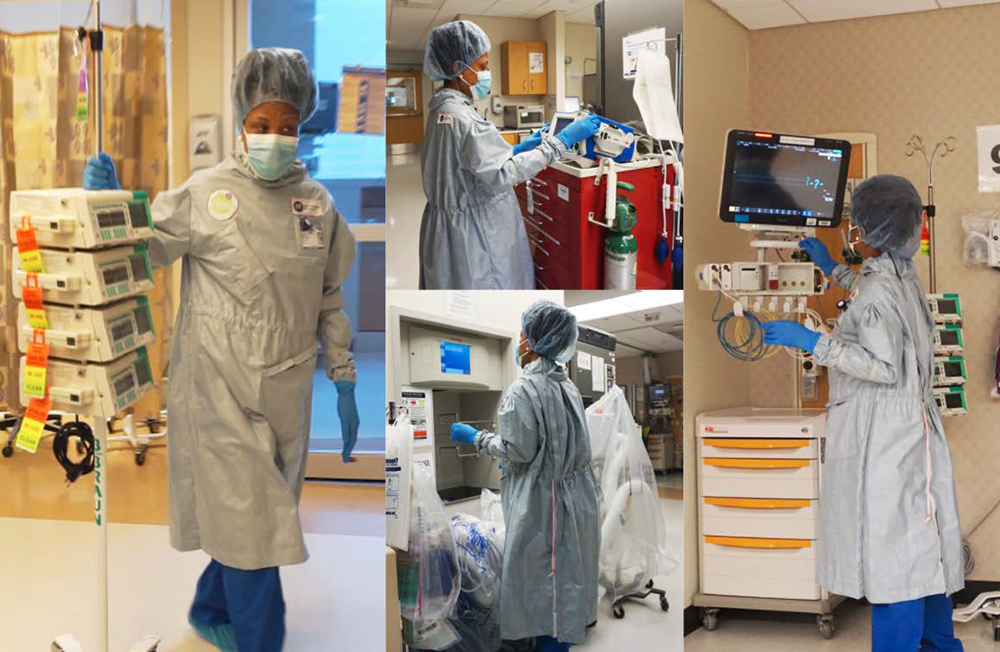More
Purpose/Impact
Through the course of this project, Lee identified several features to create more functional and fashionable protective gear for female healthcare workers. The new garments were designed to fit a range of body sizes and types using expandable drawstrings, elastic bands, and velcro. Enhanced protection was also critical, and Lee improved upon existing sleeve designs with flat elastic bands to make them less bulky; she also added a panel to cover the wearer’s neck, a feature nonexistent in typical medical garments. Further additions included utility pockets in various exterior locations and a chest ID pocket with a transparent cover—as surveys and interviews emphasized the need for easy identification with patients, especially when the face is covered. To reduce the time it takes to don and remove it, the garments’ opening plackets were finished with velcro instead of the more common string ties. For ease of body movement, especially when the wearer’s body is bent, the garment opening plackets were set diagonally instead of straight, with the opening plackets tested on both the front and back. Finally, and of no little importance, were the garment’s aesthetics, which most study participants agreed can aid in job performance and when working with patients. As examples, feminine puff and pleated sleeves were added (instead of regular, set-in sleeves), as well as digitally printed fabrics with bright colored flower patterns on the pockets and arms. Inspired by windproof sportswear jackets, the design also included bright, neon-colored trims.
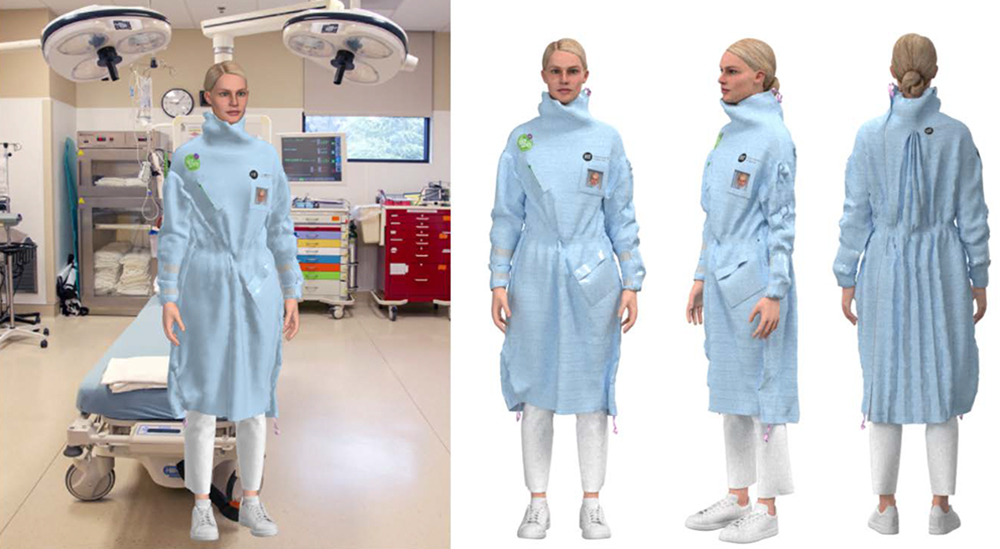
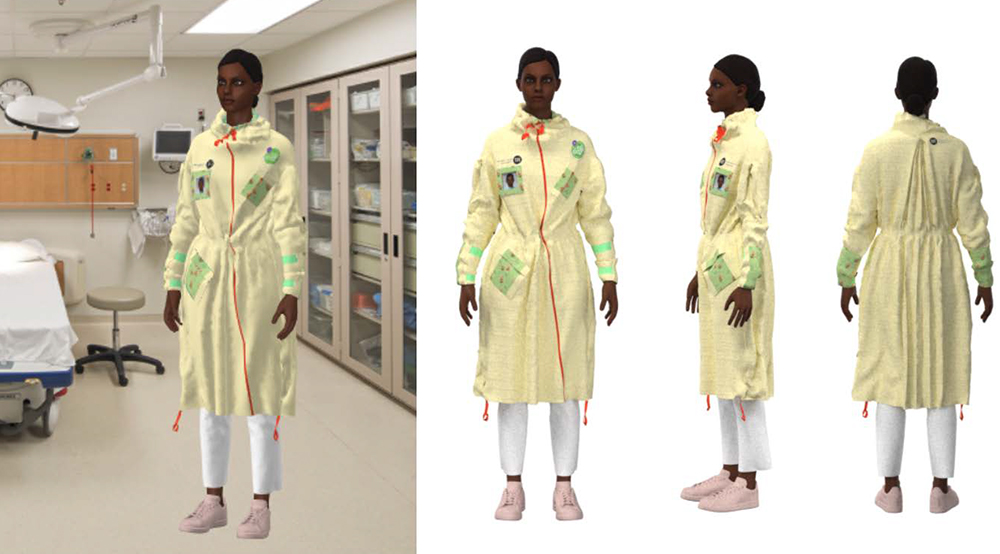
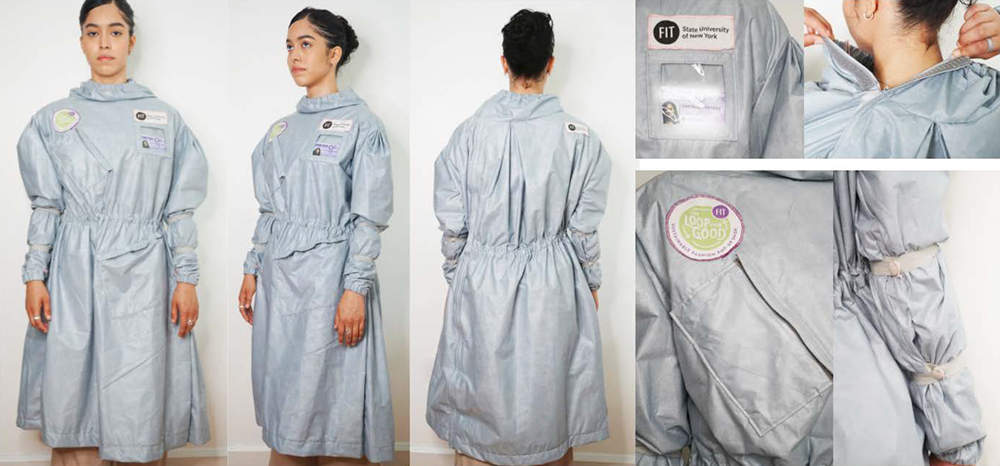

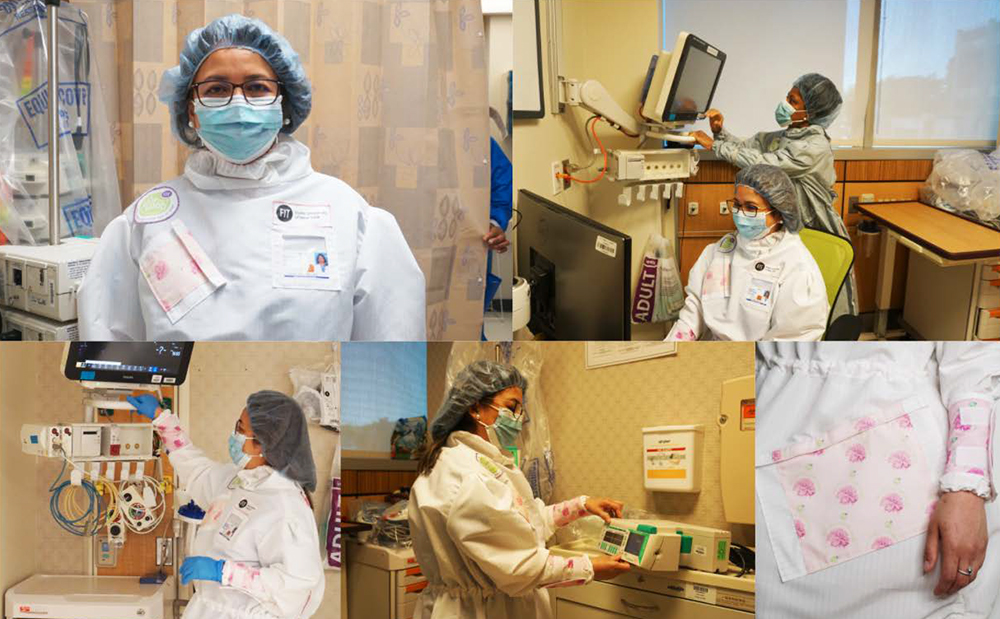
Outcomes/Accomplishments
By the end of the grant period, Lee had created three different garment prototypes that incorporated the survey and design evaluation results. One was made from disposable Polyphenylene Ether (PPE, commonly used in disposable protective medical garments) donated by Fabscrap—a nonprofit organization that resells unused fabric—and two were created by using reusable medical barrier fabrics (99% polyester, 1% carbon fiber) and various functional trim materials. The disposable PPE garment featured an opening in the back and most closely resembled current medical garments; the two reusable fabric garments included an additional zipper, one in the back and the other in the front. The completed prototype garments were sent to three of the registered nurses who took part in the project’s survey to assess their fit, evaluate the new design features, and provide overall feedback. With this final round of input, the garment designs were further refined in a 3D virtual format and fitted onto digital avatars, ready to be produced.
STATUS UPDATE
With tested prototypes and a final design ready, Lee plans to publish this design study in peer reviewed journals and on Wix.com (a portfolio publication website), and present it at conferences. In the process, Lee enhanced her understanding and implementation of 3D garment visualization techniques, design research capacity, and pedagogical skills on 2D and 3D computer-aided product development, knowledge she plans to incorporate into her FIT lesson plans.
